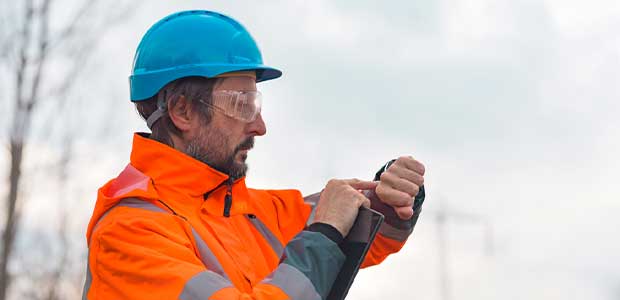
Case Study: Wearables Pilot Program Drives Reduction in Warehouse Hazards
A small, wearable sensor let workers know when they were at risk for sprains.
- By Penney Phipps
- Jul 13, 2022
The market for wearables is expanding. Wearables are devices worn on the body, often with sensors, that can track a variety of data which is then connected to the Internet for analysis and action. Recent research has cited the market for wearable sensors is expected to grow 17.1 over the next six years, reaching $5.7 billion by 2028. And according to industry analyst firm Gartner, the pandemic is to thank for the most recent spate of growth as consumer interest in health data and remote work grew exponentially. That massive wave of adoption has paved the way for businesses in the industrial space to introduce wearable technology to their facilities. Such devices are no longer considered “futuristic” and instead are perceived as commonplace to many employees. That familiarity is key to making wearables a practical application within the warehouse environment.
To minimize strains and sprains from manual material handling, our locations have implemented many controls and innovations over the years. These include raising workstations and installing overhead devices to relieve tooling weight and minimize trip hazards. In 2021, the Wesco corporate health and safety team took a closer look at how we could leverage wearables to help ensure safety in our warehouses.
Wesco’s goal with this pilot was to determine if a simple wearable the size of a keyfob could help reduce the risk of hazardous movements for their employees. More specifically, Wesco wanted to focus on reducing spine hazards among the warehouse team. Awkward static posture, poor bending, back twisting, repetition, and intense bending can all have negative effects, often resulting in spine strains. For example, poor bending adds to the risk of injury—not just given the weight of the object, but also due to the weight of the upper body itself.
Working in partnership with a third-party vendor, we architected an IoT-based pilot program that provided a wearable sensor to warehouse employees which was placed on the back of a shirt. The device alerted the individual via vibrations and beeps any time a hazardous movement was detected. In order to get the device to not beep or stop activating, users had to adjust their posture and stand, bend, or move differently in real time. Essentially, the wearable device provided “active education” for workers and ensured they had the opportunity to modify movements to avoid a sprain risk.
Over just a three-week period, one of our warehouses in the northeastern United States saw a significant improvement. Sixty-two percent of workers dropped their average hazards per hour by 50 percent or more! In addition, the team experienced a 39 percent reduction in material handling risk.
For example, during the initiative, one of our wire cutters recognized that he was regularly getting alerted during every floor-level task. To remedy the situation, he added an extra wire spool to sit the coil upon. Once site management noticed the situation, they immediately invested in a mobile, adjustable lift cart to serve as an elevated work platform. As a result, the work could be done in the ergonomic “Strike Zone” from knees to shoulders which reduced spine concerns.
The critical success factor for this pilot program was participation by Wesco’s warehouse associates. Employees and managers alike embraced the wearables and were happy to provide feedback to improve the program. That level of commitment was key to ensuring the health and safety team could see the real-world impact of this technology. The pilot was considered a success, and Wesco’s health and safety team is investigating future rollouts of wearable technology in additional locations.
The data from this project underscores just how impactful wearable technology can be to drive safety in a warehouse setting. Not only did the devices teach employees how to make posture modifications, but it trained the team to continuously use those newly learned behaviors to help avoid future spine hazards. As the interest in and adoption of wearable technology grows, Wesco will continue to evaluate new technologies to ensure workplace safety.